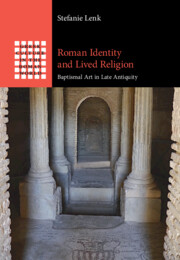Book contents
- Roman Identity and Lived Religion
- Greek Culture in the Roman World
- Roman Identity and Lived Religion
- Copyright page
- Dedication
- Contents
- Figures
- Acknowledgements
- Preface
- Abbreviations
- Introduction
- 1 The Absence of Christian Iconography and the Presence of Roman Cult and Culture in the Baptismal Complex of Cuicul, Numidia
- 2 The Use of Non-Christian Imagery in Baptisteries
- 3 The Conversion of a Personification
- Coda
- References
- Index
- References
References
Published online by Cambridge University Press: 08 February 2025
- Roman Identity and Lived Religion
- Greek Culture in the Roman World
- Roman Identity and Lived Religion
- Copyright page
- Dedication
- Contents
- Figures
- Acknowledgements
- Preface
- Abbreviations
- Introduction
- 1 The Absence of Christian Iconography and the Presence of Roman Cult and Culture in the Baptismal Complex of Cuicul, Numidia
- 2 The Use of Non-Christian Imagery in Baptisteries
- 3 The Conversion of a Personification
- Coda
- References
- Index
- References
- Type
- Chapter
- Information
- Roman Identity and Lived ReligionBaptismal Art in Late Antiquity, pp. 201 - 244Publisher: Cambridge University PressPrint publication year: 2025

